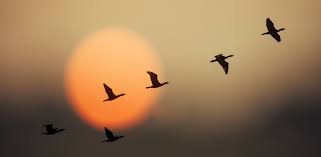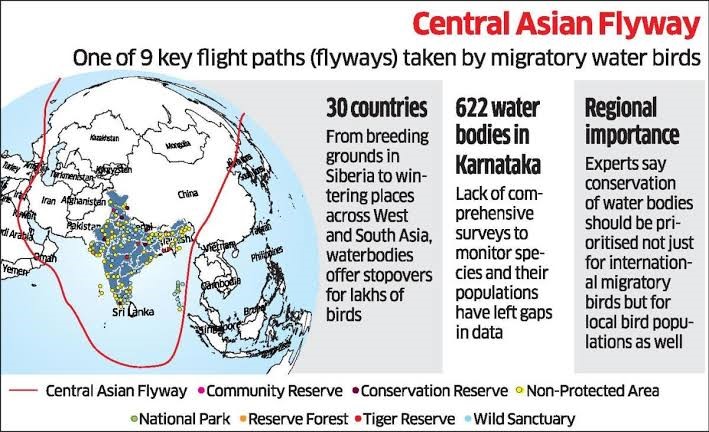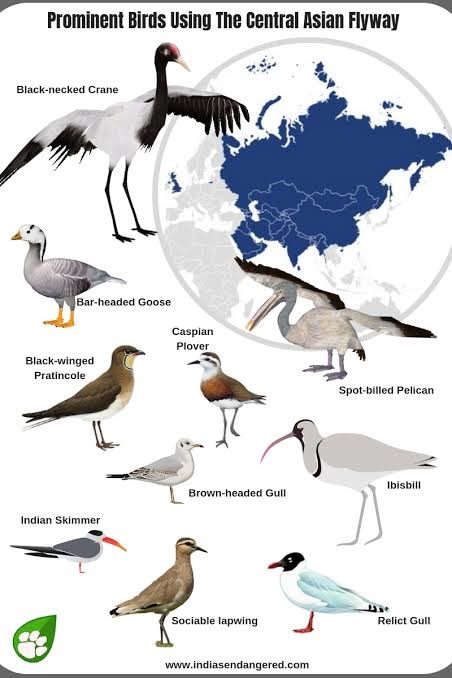CURRENT AFFAIRS
Get the most updated and recent current affair content on Padhaikaro.com
Conference of Central Asian Flyway (CAF) for birds migration
- IAS NEXT, Lucknow
- 09, Oct 2021

A virtual two-day CAF range countries’ meeting was held recently.
What is migration? Why is it significant?
Migration is an adaptation mechanism to help birds overcome weather adversities and unavailability of food in colder regions.
- The importance of bird migrations on the health of the ecosystems is well-established.
- Saving migratory birds means saving the wetlands, terrestrial habitats and saving of an ecosystem, benefiting communities dependent on wetlands.
Challenges faced by migratory birds:
- Accelerated habitat loss globally during the last decade.
- Decreased area under water bodies, wetlands, natural grasslands and forests.
- Increased weather variability, and climate change have resulted in loss of biodiversity for the migratory birds.
Way ahead:
Conserving migratory birds requires cooperation and coordination along the entire Central Asian Flyway (CAF) between countries and across national boundaries.
What is a flyway?
A flyway is a geographical region within which a single or a group of migratory species completes its annual cycle – breeding, moulting, staging and non-breeding.
About the Central Asian Flyway:
- Central Asian Flyway (CAF) covers a large area of Eurasia between the Arctic and Indian Oceans.
- Including India, there are 30 countries under the Central Asian Flyway.
- The CAF comprises several important migration routes of waterbirds, most of which extend from the northernmost breeding grounds in Siberia to the southernmost non-breeding wintering grounds in West Asia, India, the Maldives and the British Indian Ocean Territory.

Why do countries need to protect Flyways?
- Approximately one in five of the world’s 11,000 bird species migrate, some covering enormous distances. Conserving migratory birds requires cooperation and coordination along the entire flyway between countries and across national boundaries.
- Safeguarding flyways means protecting the birds from poachers, rejuvenating wetlands among others. Saving the wetlands, terrestrial habitats help in fulfilling the bigger purpose of saving an ecosystem.
